You searched for: %EC%B9%B4%EC%A7%80%EB%85%B8%20%EB%B3%B4%EA%B3%A0%EC%84%9C%20zx444.top%20%EC%BD%94%EB%93%9C%206520%20%ED%94%8C%EB%A0%88%EC%9D%B4%20%EC%B9%B4%EC%A7%80%EB%85%B8%20%EC%A3%BC%EC%86%8C%20%EC%B9%B4%EC%A7%80%EB%85%B8%20%EA%B0%80%EC%9E%85%EC%BF%A0%ED%8F%B0%20%EC%A6%89%EC%8B%9C%EC%A7%80%EA%B8%89%20%EC%98%A4%EB%8A%98%EC%9D%98%ED%94%84%EB%A1%9C%EC%95%BC%EA%B5%AC%20ioq
<< Previous | Displaying results 411-420 of 505 for "%EC%B9%B4%EC%A7%80%EB%85%B8%20%EB%B3%B4%EA%B3%A0%EC%84%9C%20zx444.top%20%EC%BD%94%EB%93%9C%206520%20%ED%94%8C%EB%A0%88%EC%9D%B4%20%EC%B9%B4%EC%A7%80%EB%85%B8%20%EC%A3%BC%EC%86%8C%20%EC%B9%B4%EC%A7%80%EB%85%B8%20%EA%B0%80%EC%9E%85%EC%BF%A0%ED%8F%B0%20%EC%A6%89%EC%8B%9C%EC%A7%80%EA%B8%89%20%EC%98%A4%EB%8A%98%EC%9D%98%ED%94%84%EB%A1%9C%EC%95%BC%EA%B5%AC%20ioq" | Next >>
-
Warsaw Ghetto Sealed
Timeline EventNovember 15, 1940. On this date, German authorities ordered the Warsaw ghetto to be sealed.
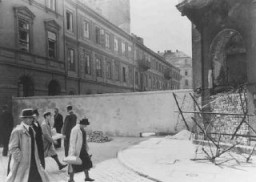
-
Terez Goldberger Kalman
ID CardTerez came from a religious Jewish family. She and her husband, Samuel, raised eight children in Satoraljaujhely, in northeastern Hungary. The Kalmans lived on the outskirts of the city, and in the 1920s they ran a canteen for the soldiers who lived in the nearby barracks. The Kalmans were proud Hungarians; one of their sons had died in World War I. 1933-39: Since Samuel died a few years ago, Terez has been alone here in her house in Satoraljaujhely. Many of her children live nearby, though, so her home…
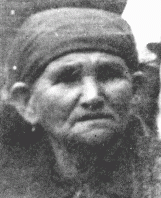
-
Buchenwald
ArticleThe Nazi regime established the Buchenwald camp in 1937. Learn about the camp’s prisoners, conditions there, forced labor, subcamps, medical experiments, and liberation.

-
Beifeld album page about events of August 28, 1942
Artifact(Top) A drawing dated October 1942 depicting the events of August 28 when Beifeld was wounded near the front lines. His caption reads: "I get wounded and manage to get away from the dangerous bend in the [Don] river]." (Bottom left) Skull of a Soviet soldier with the caption 'Keep Smiling.' (Bottom right) Map entitled 'Dangerous Curve' depicting the bend in the Don River where the Soviet army was threatening to break through. [Photograph # 58061]

-
Eugenio Gentili Tedeschi
ArticleRead the Jewish Partisan Educational Foundation's short biography of Eugenio Gentili Tedeschi.
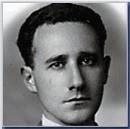
-
Samuel Soltz's Visa
Timeline EventAugust 21, 1940. On this date, Samuel Soltz's visa was stamped by Chiune Sugihara, the Japanese consul to Lithuania.
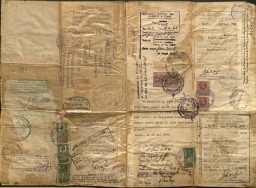
-
Abraham Bomba describes the Treblinka gas chambers
Oral HistoryExcerpt from Holocaust survivor Abraham Bomba's oral history testimony describing gas chambers at the Treblinka killing center.
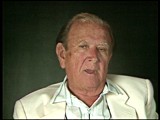
-
Léon Degrelle
ArticleLéon Degrelle was an extreme right-wing Belgian politician and Nazi collaborator. After the war, he continued to spread pro-Nazi propaganda for decades. Learn more.
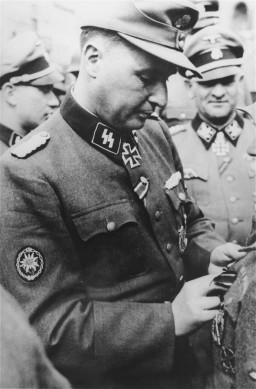
-
David (Dudi) Bergman describes liberation by US Army in mountains near Innsbruck
Oral HistoryThe Germans occupied David's town, previously annexed by Hungary, in 1944. David was deported to Auschwitz and, with his father, transported to Plaszow. David was sent to the Gross-Rosen camp and to Reichenbach. He was then among three of 150 in a cattle car who survived transportation to Dachau. He was liberated after a death march from Innsbruck toward the front line of combat between US and German troops.

-
Selma Engel diary entry about life in hiding
ArtifactDiaries reveal some of the most intimate, heart-wrenching accounts of the Holocaust. They record in real time the feelings of loss, fear, and, sometimes, hope of those facing extraordinary peril. Selma Wijnberg and Chaim Engel met and fell in love in the Sobibor killing center. After the young couple made a daring escape during the camp uprising and fled into hiding, Selma began a diary to record their experiences. The diary was written in 1943-1944 while Selma was in hiding in German-occupied…

